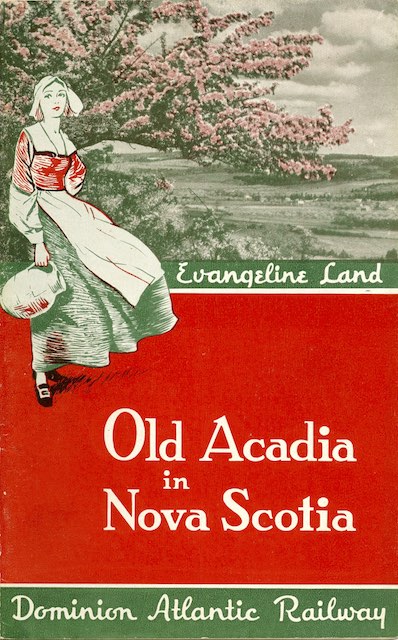As previously noted here, the Dominion Atlantic Railway had been a wholly owned but independently operated subsidiary of the Canadian Pacific since 1911. The railway served Nova Scotia, which had once been occupied by French-speaking Acadians. During the French & Indian War, most Acadians had been forcibly deported, with nearly half dying in transit. Nearly a century later, the sad plight of the Acadians was covered in a Longfellow poem called Evangeline.
 Click image to download a 7.4-MB PDF of this 28-page booklet.
Click image to download a 7.4-MB PDF of this 28-page booklet.
In the 1920s, Dominion Atlantic noted that large numbers of descendants of the surviving Acadians were returning to Nova Scotia as tourists. To promote this tourism, it bought land near the former site of a community where Evangeline was supposed to have lived known as Grand Pré, which just happened to be on the railway’s main line. It made this land into a park, planting gardens, opening a museum, erecting a statue of Evangeline, and raising funds to build a replica of a church that once served the community. Eventually, in 1957, the railway sold this park to the Canadian government and it is now a national historic site.
Historians agree that Longfellow’s Evangeline was fiction, yet this booklet insists that the characters in the poem were real “according to Acadian tradition.” The church built on the site, while attractive, is probably nothing like the original church. So Dominion Atlantic’s efforts could be seen as doing its civic duty to remember the past, or they could be viewed as simply trying to earn a few dollars by pandering to myth and nostalgia. Perhaps it is something in between, but according to this booklet, its aim was to unite people “in the noble task of establishing at Grand Pre a shrine worthy of its surroundings, scenic and historic.”
